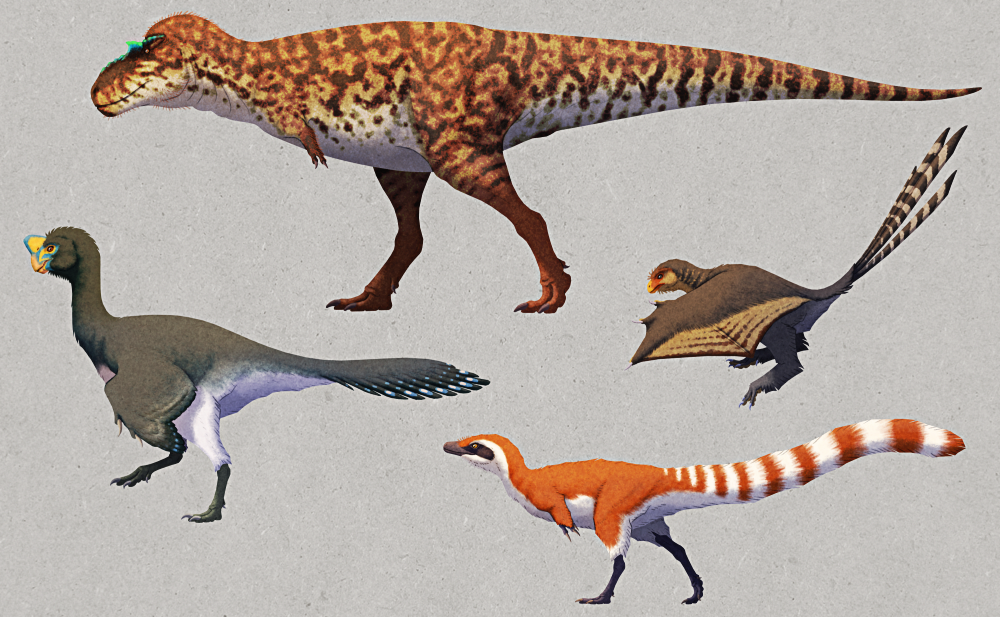Historically Coelurosauria was the counterpart to the Carnosauria, with both of them representing two major lineages of theropod dinosaurs.
Created as a group in the early 20th century, coelurosaurs quickly became a dumping ground for all small-bodied theropods – including coelophysoids, compsognathids, ornithomimids, oviraptorosaurs, dromaeosaurids, and troodontids– and for a while this wastebasket taxon also included the large-bodied ceratosaurids and tyrannosauroids, before they were moved over into the carnosaurs.
But during the 1960s and 1970s this arrangement began to break down. A better understanding of groups like dromaeosaurs revealed a confusing mixture of traditional “carnosaur” and “coelurosaur” anatomical features, and paleontologists struggled to figure out where these sorts of theropods actually fit in.
The development of cladistic methods from the 1970s onwards led to efforts to clean up the coelurosaur wastebasket, trying to figure out a more accurate version of these animals’ evolutionary relationships. After briefly collapsing Coelurosauria down to just coelophysoids and “coelurids“, the growing recognition of modern birds as living theropod dinosaurs eventually resulted in the group being properly redefined in the 1980s as “birds, and all theropods closer related to them than to carnosaurs“.

The coelophysoids were finally removed entirely, reclassified as a much earlier branch of theropods – but quite a few of the other groups from earlier concepts of Coelurosauria survived this reshuffling, with the compsognathids, ornithomimids, oviraptorosaurs, dromaeosaurs, and troodontids all proving themselves to have really been closely related the whole time. Meanwhile the tyrannosauroids were brought back in, along with the therizinosaurs, alvarezsauroids, and a whole bunch of paravian and avialan lineages.
(Megaraptorans might belong somewhere in the coelurosaurs, too – possibly being tyrannosauroids – but their classification is currently being disputed.)

I hope you do feather distribution in the dinosaur/archosaur family tree soon!